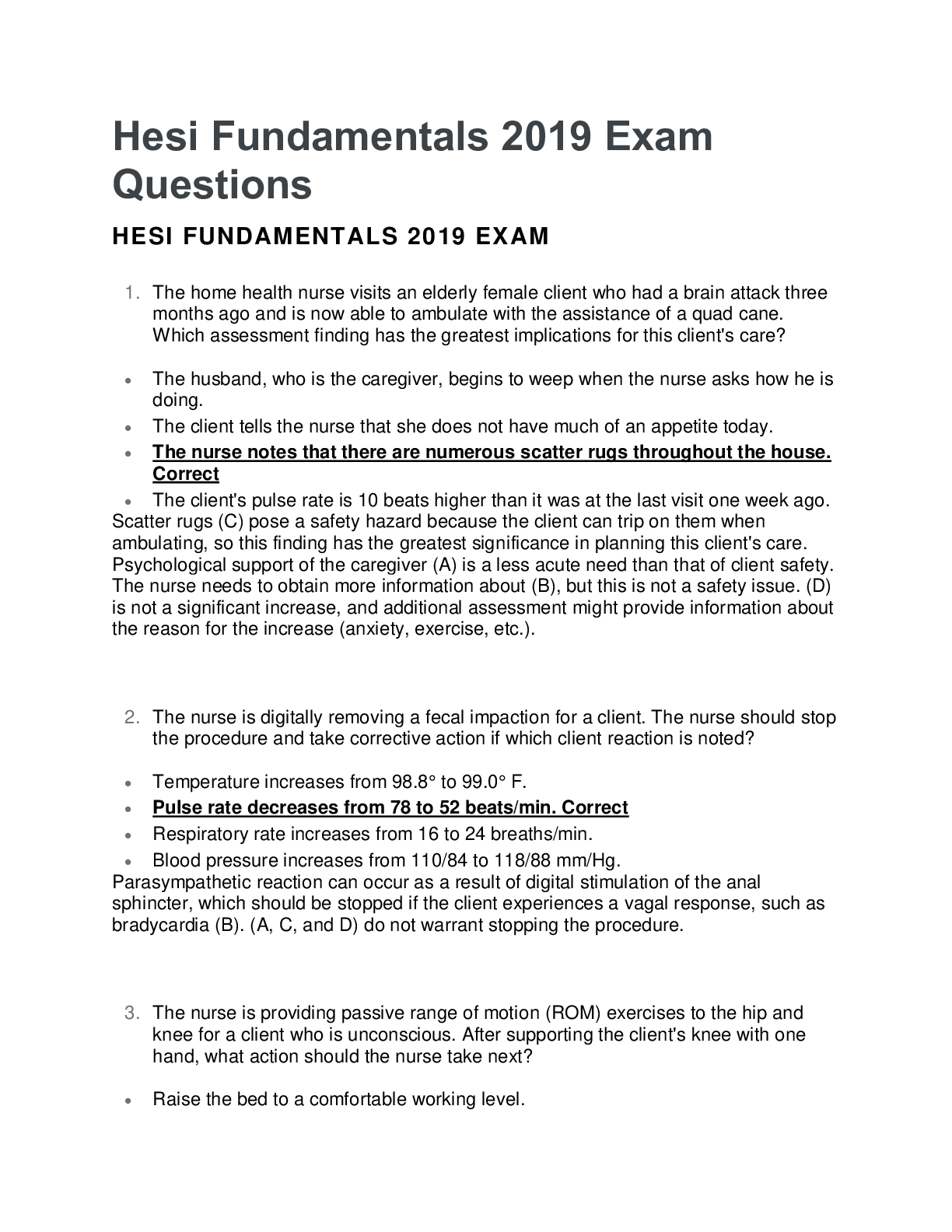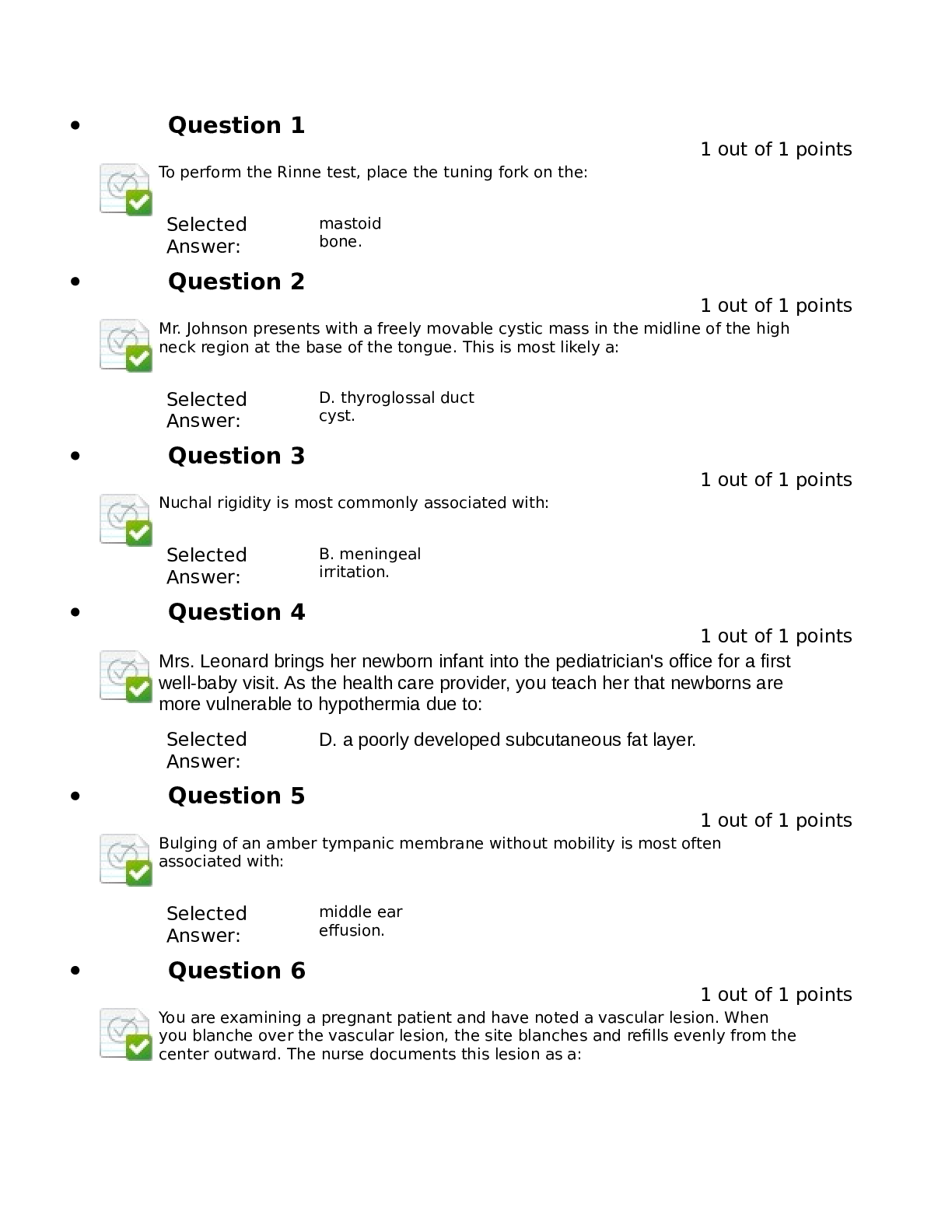Financial Accounting > QUESTIONS & ANSWERS > University of Minnesota, Duluth ACCT 3201 chapter 4 Job Costing QUESTIONS WITH VERIFIED SOLUTIONS (All)
University of Minnesota, Duluth ACCT 3201 chapter 4 Job Costing QUESTIONS WITH VERIFIED SOLUTIONS
Document Content and Description Below
Cost Accounting: A Managerial Emphasis, 16e (Horngren) Chapter 4 Job Costing 4.1 Objective 4.1 1) A cost is considered direct if it can be traced to a particular cost object in a cost effective wa... y which means it can be A) traced easily with the aid of technology B) traced in a manner that is accurate C) traced in an economically feasible way D) possibly traced accurately with an investment in hardware and software Answer: C Diff: 1 Objective: 1 AACSB: Analytical thinking 2) A ________ is anything for which a measurement of costs is desired. A) cost-allocation base B) cost pool C) cost object D) cost-application base Answer: C Diff: 1 Objective: 1 AACSB: Analytical thinking 3) A ________ is a grouping of individual indirect cost items. A) cost-allocation base B) cost assignment C) cost pool D) job-costing system Answer: C Diff: 1 Objective: 1 AACSB: Analytical thinking 4) A manufacturer utilizes three separate indirect cost pools. Which of the following is true? A) Each indirect cost pool utilizes a separate cost-allocation rate B) Each indirect cost pool is a subset of total direct costs C) Each indirect cost pool relates to multiple cost centers D) Each indirect cost pool utilizes the same cost-allocation rate for all costs incurred Answer: A Diff: 1 Objective: 1 AACSB: Analytical thinking5) Direct costs ________. A) are anything for which a measurement of costs is desired B) are costs related to a particular cost object that can be traced to that cost object in an economically feasible manner C) focus specifically on the costing needs of the CFO D) are costs related to a particular cost object that cannot be traced to that cost object in a cost-effective manner Answer: B Diff: 2 Objective: 1 AACSB: Analytical thinking 6) In a costing system, ________. A) cost tracing allocates indirect costs B) cost allocation assigns direct costs C) a cost-allocation base can be either financial or nonfinancial D) a cost object should be a product and not a department or a geographic territory Answer: C Diff: 2 Objective: 1 AACSB: Analytical thinking 7) Assigning direct costs to a cost object is called ________. A) cost allocation B) cost assignment C) cost pooling D) cost tracing Answer: D Diff: 1 Objective: 1 AACSB: Analytical thinking 8) ________ is the process of assigning indirect costs to products. A) Cost allocation B) Job cost recording C) Cost pooling D) Cost tracing Answer: A Diff: 1 Objective: 1 AACSB: Analytical thinking9) Allocating indirect costs to departments based on the relative revenue earned by those departments is done based on which of the following criterion? A) direct hours utilized B) benefits received C) material resources used D) cause-and-effect relationships Answer: B Diff: 1 Objective: 1 AACSB: Analytical thinking 10) Which of the following includes both traced direct costs and allocated indirect costs? A) cost tracing B) cost pools C) cost assignments D) cost allocations Answer: C Diff: 1 Objective: 1 AACSB: Analytical thinking 11) The cost allocation base ________. A) is a grouping of individual indirect cost items B) are costs related to a particular cost object that cannot be traced to that cost object in an economically feasible way C) is anything for which a measurement of costs is desired D) is a systematic way to link an indirect cost or group of indirect costs to cost objects Answer: D Diff: 1 Objective: 1 AACSB: Analytical thinking 12) Direct costs are allocated to the cost object using a cost-allocation method. Answer: FALSE Explanation: Indirect costs are allocated to the cost object using a cost-allocation method. Diff: 1 Objective: 1 AACSB: Analytical thinking 13) A cost object is anything for which a measurement of costs is desired. Answer: TRUE Diff: 1 Objective: 1 AACSB: Analytical thinking14) Direct costs of a cost object are costs related to a particular cost object that can be allocated to that cost object in an economically feasible (cost-effective) way. Answer: FALSE Explanation: Direct costs of a cost object — costs related to a particular cost object that can be traced to that cost object in an economically feasible (cost-effective) way. Diff: 1 Objective: 1 AACSB: Analytical thinking 15) The cost-allocation base is a systematic way to link an indirect cost or group of indirect costs to cost objects. Answer: TRUE Diff: 2 Objective: 1 AACSB: Analytical thinking 16) Cost objects may be jobs, products, or customers. Answer: TRUE Diff: 1 Objective: 1 AACSB: Analytical thinking 17) When an organization allocated indirect costs to departments by relative size of the budgets, it is based on the criterion of benefits received. Answer: FALSE Explanation: When an organization allocated indirect costs to departments by relative size of the budgets, it is based on the criterion of ability to bear costs. Diff: 1 Objective: 1 AACSB: Analytical thinking18) For each item below indicate the source documents that would most likely authorize the journal entry in a job-costing system. Required: a. direct materials purchased b. direct materials used c. direct manufacturing labor d. indirect manufacturing labor e. finished goods control f. cost of goods sold Answer: a. purchase invoice b. materials requisition record c. labor time card/record [Show More]
Last updated: 2 years ago
Preview 1 out of 77 pages

Buy this document to get the full access instantly
Instant Download Access after purchase
Buy NowInstant download
We Accept:

Reviews( 0 )
$13.00
Can't find what you want? Try our AI powered Search
Document information
Connected school, study & course
About the document
Uploaded On
Jul 09, 2021
Number of pages
77
Written in
Additional information
This document has been written for:
Uploaded
Jul 09, 2021
Downloads
0
Views
96
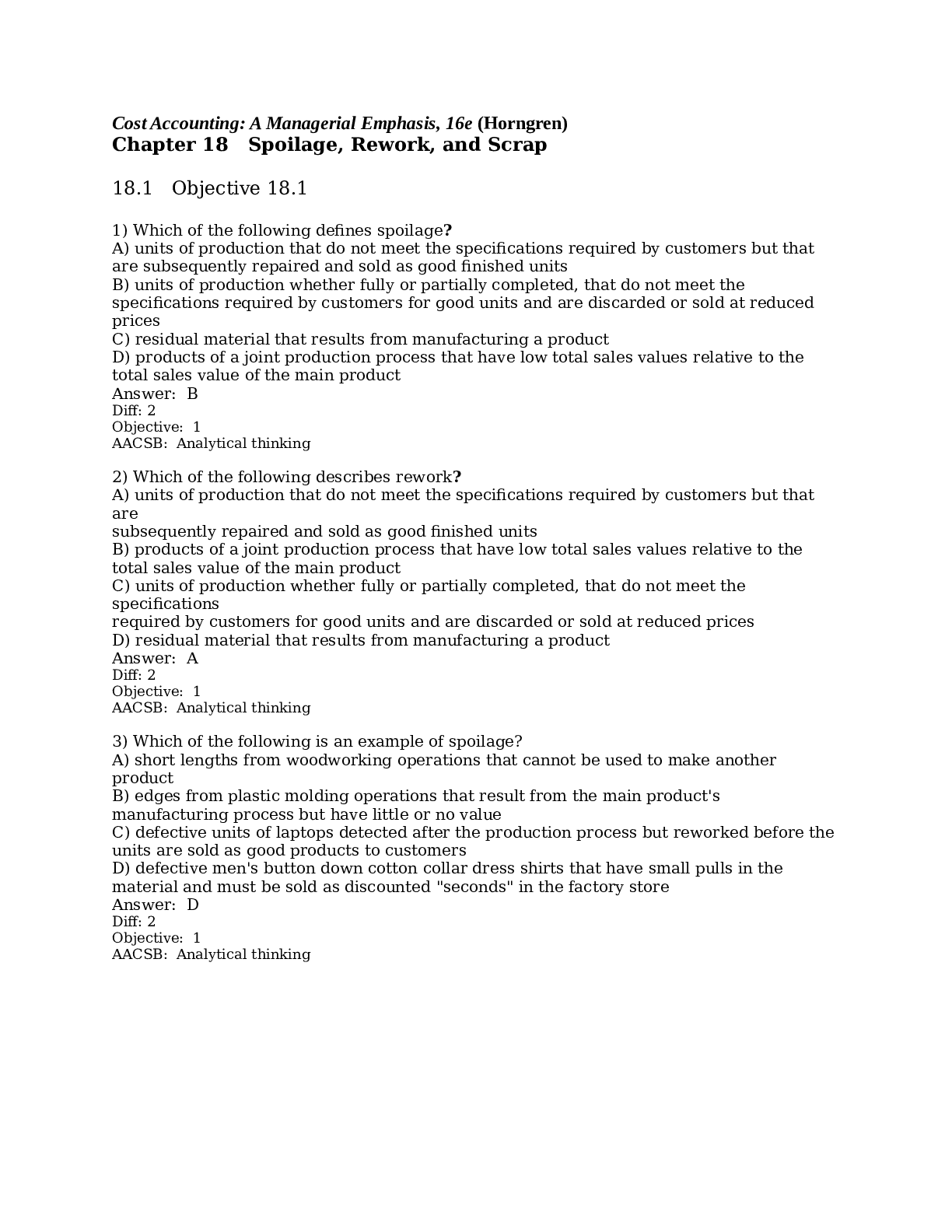








.png)

.png)


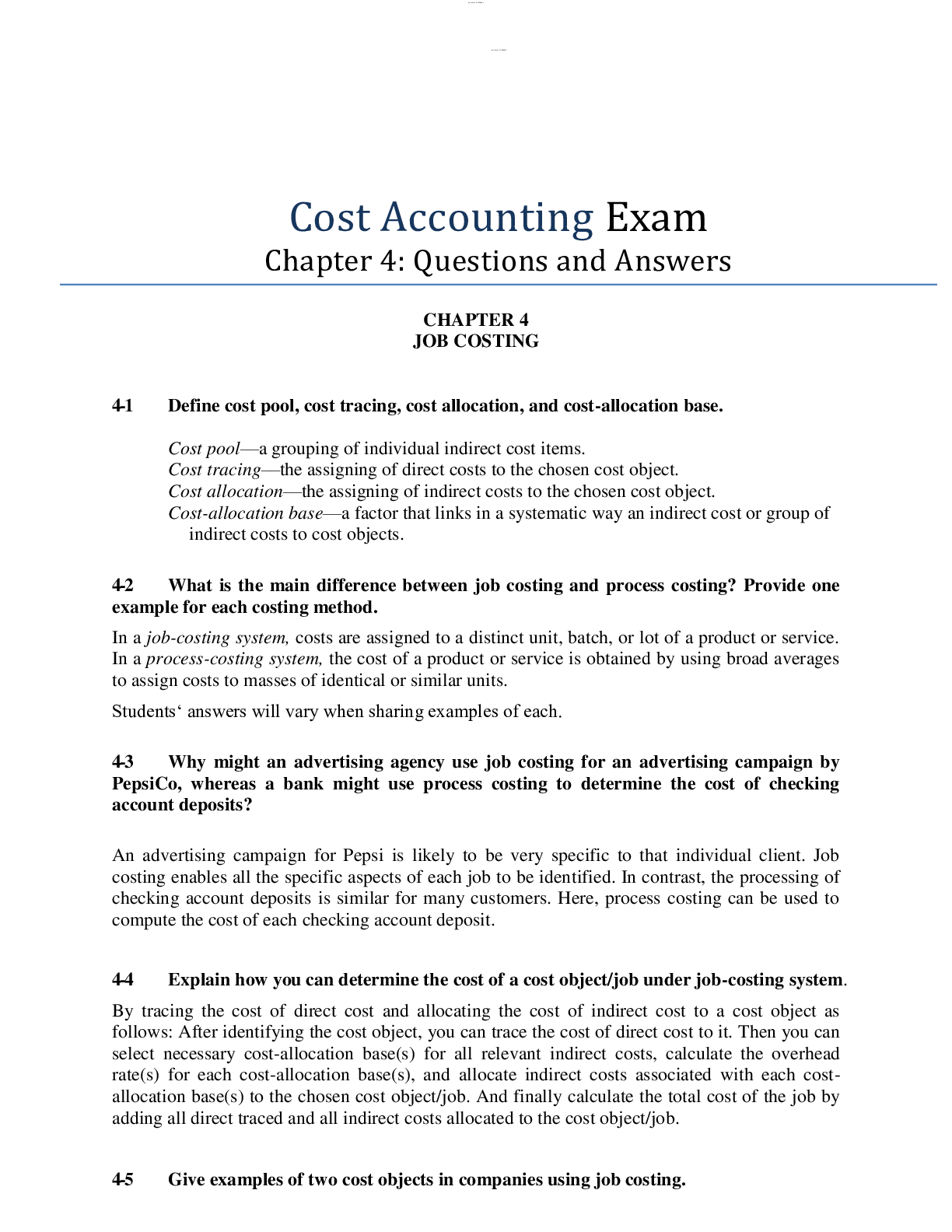
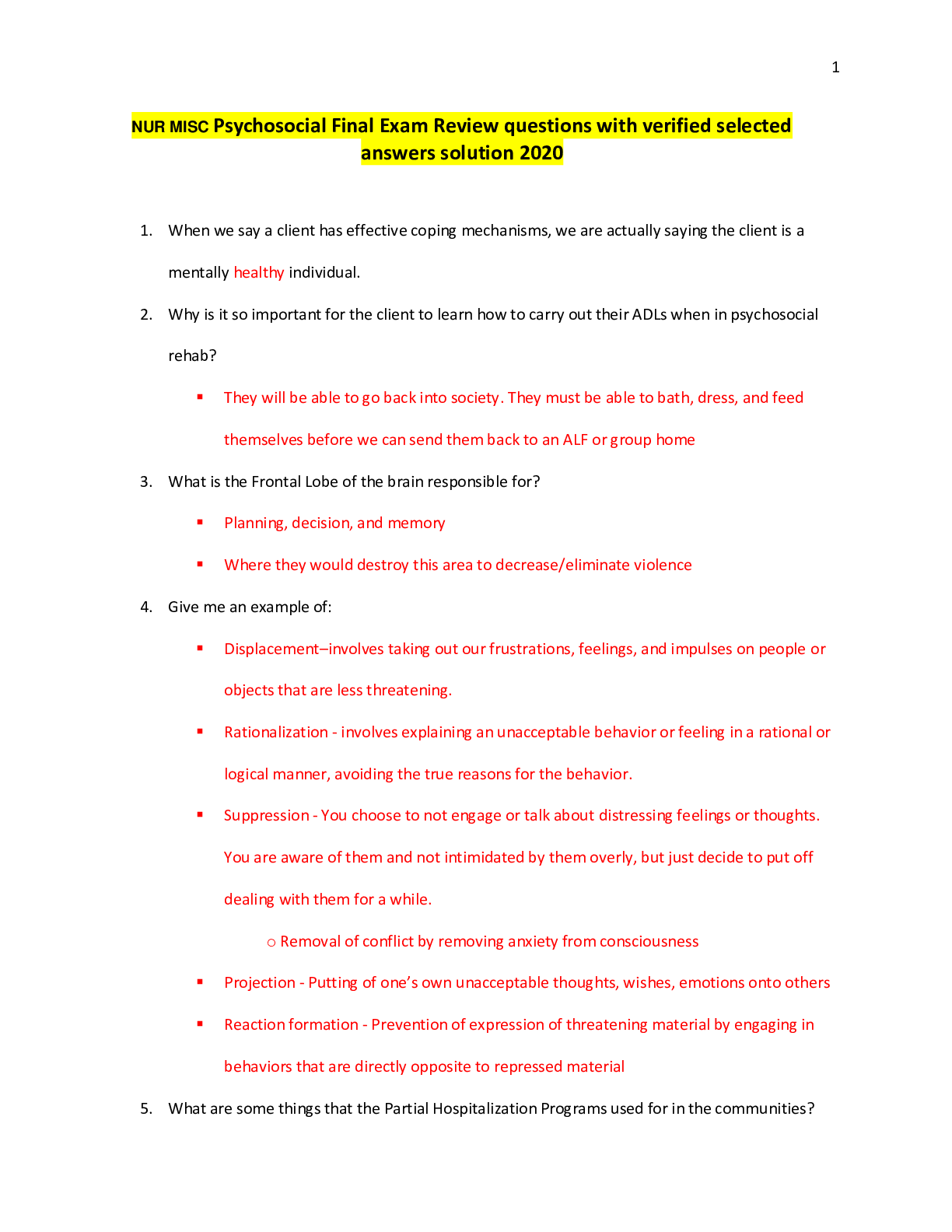




 2021.png)

.png)

